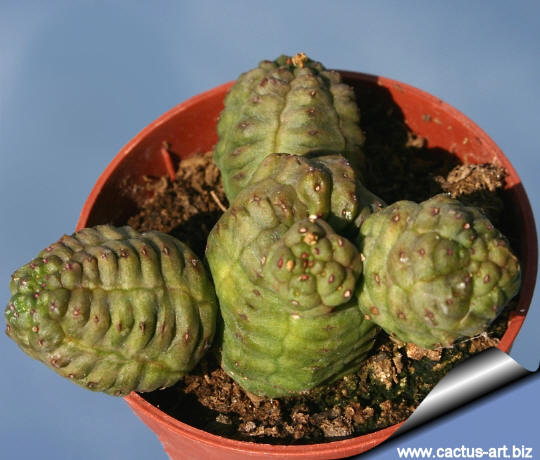|

It is a dwarf slow and low growing succulent that
looks like a cactus.
Cultivation: Like a sunny position. It does best in a mineral soil,
good drainage is essential. Water sparingly during the summer months and
keep dry in winter. It is a slow growing long lived plant and once
established, it will be content in its position and with its soil for
years. It can tolerate moderate shade, and a plant that has been growing
in shade should be slowly hardened off before placing it in full sun as
the plant will be severely scorched if moved too suddenly from shade
into sun. Contrarily to
Euphorbia globosa, Euphorbia pseudoglobosa
have a large tap root and requires a relatively deep pot. Sometimes
needs pruning not to look like a mess.
Propagation: The plant can be reproduced by
seeds sown during spring or summer, cuttings and division of larger
clumps. If you remove an offset, remember to let it dry for a
week or so, letting the wound heal (cuttings planted too soon easily rot
before they can grow roots). It is better to wash the cut to remove the
latex.
Warning: As with all other Euphorbias, when a plant gets damaged it
exudes a thick white milky sap known as latex. This latex is poisonous
and may irritate skin, so pay extreme attention not to get any in your
eyes or mouth.
Cultivated plants must be handled carefully.
|